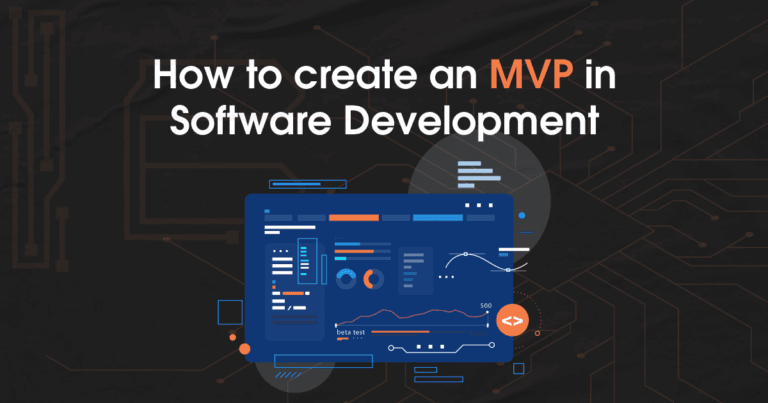What Does MVP Mean in Product Development?
 Marketing IBTI#Marketing IBTI
Marketing IBTI#Marketing IBTIHave you ever wondered, "What does MVP mean in product development?" Well, MVP stands for "Minimum Viable Product." It's the initial version of a product containing only the essentials. The MVP serves as a strategy to validate the product and market before developing the final version, reducing production time, costs, and the risk of the idea going wrong.
Imagine you have an idea for a new app or website. But before fully developing the project, there's an alternative called MVP. It helps you test your idea step by step before diving deep into the final product development.
In this article, we'll explain how an MVP works and how it can be a game-changer for those developing products and services from scratch.
What's an MVP in Product Development?

A Minimum Viable Product, or MVP, is a product that has enough features to attract early customers and validate whether the idea behind this product is good at the beginning of the creation process. In areas like software development, MVP is very useful as it allows the product team to quickly understand users and make the product more market-oriented.
MVP is crucial in agile development, a methodology that focuses on verifying and improving products based on what users say.
Why is an MVP important?
In general terms, an MVP can be relevant to the following areas:
Agile Business Validation:
- Simple testing: MVP helps quickly verify if your business idea works.
- Basic model: Creates a simple prototype to test key features and see if people are interested.
Focus on Core Features
- Focusing on what's important: MVP helps you concentrate on the critical parts of your product.
- Avoid unnecessary features: This prevents you from adding things that don't matter before your product is launched.
Clarity of Vision:
- Initial understanding: Initially, MVP helps identify the most important features.
- Clear roadmap: This information helps create a clear plan for your product's development.
Building Customer Relationships:
- Early connection: Talking to users early is crucial.
- Early fans: Early users become fans and provide feedback to improve the product.
Better Understanding of Needs:
- User opinions matter: What users say from the beginning is more important than extensive studies.
- Real tests: Testing the product early helps make it better for real users.
Lean User Interface (UI):
- Avoid complex products: MVP prevents the product from getting cluttered with things you don't need.
- Ease of use: This keeps the product simple and easy to use.
Risk Reduction:
- Large projects take time: Working on a large project requires a lot of time and effort.
- Safe start: Starting with an MVP is safer because you can make changes slowly based on user feedback.
Characteristics of an MVP
An MVP should be:
- Focused: Focus on solving a core problem. Don't try to do too many things at once.
- Functional: It should be able to perform its core function. It doesn't need to be perfect, but it must work.
- Adaptable: You can easily add or remove features based on what customers say.
How to Create an MVP in Software Development

First, let's define "What is an MVP in Software Development?" In the software world, an MVP is the initial version of a new software. It's when developers release a basic version (beta) of their apps before adding all the features. This allows them to test how people feel about the software.
Step-by-Step Guide to Create an MVP
Let's explore the essential steps in the process of creating an MVP in software development.
Ideation and Conceptualization
- Brainstorm: Start by brainstorming ideas for your software, keeping in mind the needs of the users.
- Market Research: Analyze the market to understand who you are developing the software for and who your competitors are.
- Define Goals and Features: Clearly decide what you want your software to achieve and list the features based on what you've learned.
Wireframing and Design:
- Draw: Create drawings that showcase the appearance of your software.
- Plan User Paths: Discover the paths users will take in your software for a seamless experience.
Prototyping:
- Experiment: Create interactive versions of your software to gather user feedback. Tip: Use tools like Figma and Adobe XD for this.
- Make Improvements: Listen to what users say and enhance your software based on their suggestions.
Development:
- Develop Features: Build the features of your software that users can see (front-end) and the parts they don't see (back-end).
- Testing: Ensure your software can function on different devices and platforms so more people can use it.
Testing and Quality Assurance:
- Find and Fix Bugs: Look for errors in your software and fix them to ensure it works well.
- Verify Everything Works: Make sure all features of your software function as they should.
Additional Services:
- Market Research Assistance: Some companies offer additional market research services to refine product fit in the market.
- User-Friendly Design: Make your software easy to use with good design that aids users.
- Prepare for Traction: Build a solid foundation for your software so it can grow in the future.
Adapt to Your Business Needs:
- Follow the Path that Suits Your Reality: Adjust the steps to fit what you want and what your customers need.
- Create the Best Experience: Maintain flexibility to make the process as optimal as possible for creating your software.
Still have questions about how to develop the MVP for your business? No problem! IBTI is here to help with high-level solutions through our MVP Prototyping services. An MVP is crucial to validate if your idea works with low cost. With our services, you'll have guidance throughout the entire process, from brainstorming to testing. We provide tailored solutions, fast delivery without sacrificing quality, technical expertise, a friendly approach that values feedback, and continuous support for the best MVP development experience. Choose IBTI for simple and efficient MVP development that meets your needs.
Wrapping Up
In the ever-changing world of product creation, knowing "What does MVP mean in product development?" is a crucial resource for creating products/services that resonate with the market. A Minimum Viable Product serves as a guide, helping developers deal with uncertainties, test ideas, and gather valuable user feedback. It's not just about simplifying things; it's a smart way to save time and money, creating products that truly connect with their intended audience. Whether you're a seasoned developer or just starting out, using the MVP approach is the way to breathe life into innovation and ensure your products stand out.
Frequently Asked Questions
What does MVP mean in business?
In business, MVP means creating a simple version of a product to test and collect feedback.
What is the role of user feedback in MVP product management?
Obtaining user feedback is crucial. It helps improve the product, guides changes, and ensures it meets customer needs.
What is the purpose of a minimum viable product?
The purpose of a Minimum Viable Product (MVP) is to quickly test a product idea, collect user feedback, and iterate. It reduces risks and makes product development more successful.

Marketing IBTI
#Marketing IBTI🇧🇷 Português
A IBTI é uma empresa de tecnologia com mais de 12 anos de experiência em desenvolvimento de sistemas, apps e soluções sob demanda. Atuamos no Brasil e no exterior com foco em qualidade, inovação e eficiência.
🇺🇸 English
IBTI is a tech company with over 12 years of experience developing custom software, apps, and IT-as-a-service solutions. We serve clients in Brazil and abroad, with a strong focus on quality, innovation, and efficiency.